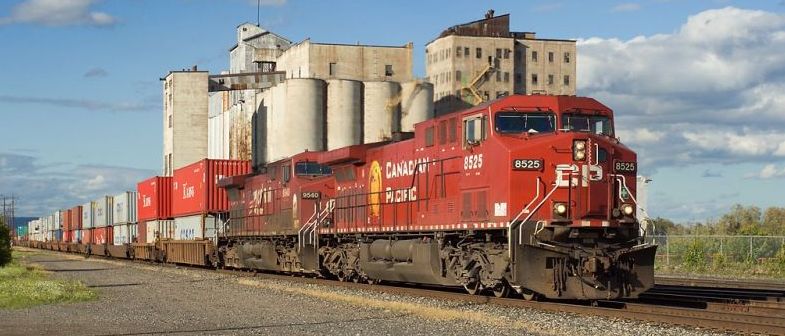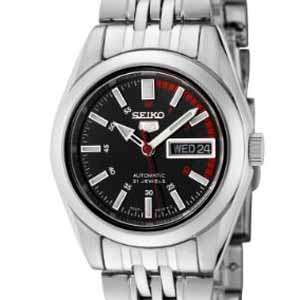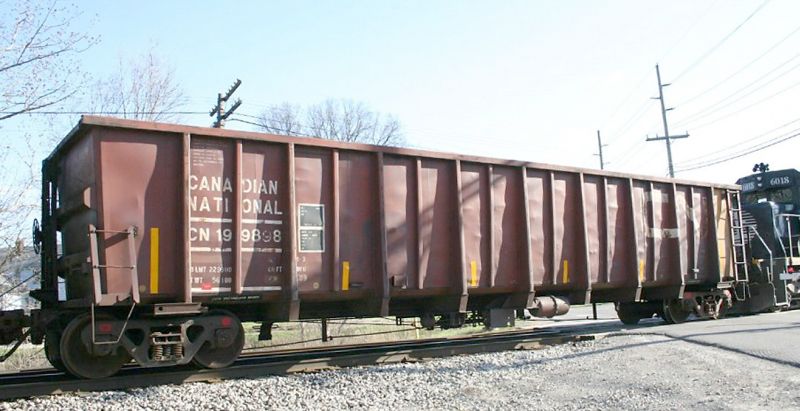Specific Item Information: CP Rail Bathtub Coal Cars Black with Multi Mark Set 4
Canadian Pacific ordered hundreds of new "bathtub" coal cars for the new trains. These cars, each with a capacity of 106.7 tonnes (105 tons), were designed to be unloaded at Roberts Bank by a rotary dumper in a non-stop operation. Cars were equipped with couplers that permitted them to be turned upside down while being moved through the dumper.
Canadian Pacific ordered hundreds of new "bathtub" coal cars for the new trains. These cars, each with a capacity of 106.7 tonnes (105 tons), were designed to be unloaded at Roberts Bank by a rotary dumper in a non-stop operation. Cars were equipped with couplers that permitted them to be turned upside down while being moved through the dumper.
Model Information: PWRS introduced this body style in 2008.
Prototype History: The 4000 cu ft. gondola was the preferred car style of CN for transporting coal from five Alberta mines to either the west coast ports for export or to ports on Lake Superior (Thunder Bay, Marmion Lake) for use by Ontario Hydro.
The first cars were built in 1970 for CN as CN 199000 series and the first eight in the series were built as double rotary cars with a rotating drawbar on each end. The cars had a capacity of 263,000 lbs and a light weight of about 58,000 lbs, giving them a load limit of approximately 205,000 lbs. Thus the cars could carry a cargo of 100 tons with a little room for overloads. When the maximum capacity was increased to 286, 000 lbs, all of the coal cars had the load limit increased by 23, 000 lbs. (The SULX cars kept their original load limit).
The cars also had a load-empty feature that increased the braking capacity of the cars when loaded, similar to a retainer. The purpose was to reduce the brake pressure when the cars were empty in order to reduce the number of skidded wheels while providing sufficient braking capacity when loaded.
From PWRS
The first cars were built in 1970 for CN as CN 199000 series and the first eight in the series were built as double rotary cars with a rotating drawbar on each end. The cars had a capacity of 263,000 lbs and a light weight of about 58,000 lbs, giving them a load limit of approximately 205,000 lbs. Thus the cars could carry a cargo of 100 tons with a little room for overloads. When the maximum capacity was increased to 286, 000 lbs, all of the coal cars had the load limit increased by 23, 000 lbs. (The SULX cars kept their original load limit).
The cars also had a load-empty feature that increased the braking capacity of the cars when loaded, similar to a retainer. The purpose was to reduce the brake pressure when the cars were empty in order to reduce the number of skidded wheels while providing sufficient braking capacity when loaded.
From PWRS
Road Name History: The Canadian Pacific Railway (CPR), formerly also known as CP Rail (reporting mark CP) between 1968 and 1996, is a historic Canadian Class I railroad incorporated in 1881. The railroad is owned by Canadian Pacific Railway Limited (TSX: CP, NYSE: CP), which began operations as legal owner in a corporate restructuring in 2001.
Headquartered in Calgary, Alberta, it owns approximately 23,000 kilometres (14,000 mi) of track all across Canada and into the United States, stretching from Montreal to Vancouver, and as far north as Edmonton. Its rail network also serves major cities in the United States, such as Minneapolis, Milwaukee, Detroit, Chicago, and New York City.
The railway was originally built between Eastern Canada and British Columbia between 1881 and 1885 (connecting with Ottawa Valley and Georgian Bay area lines built earlier), fulfilling a promise extended to British Columbia when it entered Confederation in 1871. It was Canada's first transcontinental railway, but currently does not reach the Atlantic coast. Primarily a freight railway, the CPR was for decades the only practical means of long-distance passenger transport in most regions of Canada, and was instrumental in the settlement and development of Western Canada. The CP became one of the largest and most powerful companies in Canada, a position it held as late as 1975. Its primary passenger services were eliminated in 1986, after being assumed by Via Rail Canada in 1978. A beaver was chosen as the railway's logo because it is the national symbol of Canada and was seen as representing the hardworking character of the company.
The company acquired two American lines in 2009: the Dakota, Minnesota and Eastern Railroad and the Iowa, Chicago and Eastern Railroad. The trackage of the ICE was at one time part of CP subsidiary Soo Line and predecessor line The Milwaukee Road. The combined DME/ICE system spanned North Dakota, South Dakota, Minnesota, Wisconsin, Nebraska and Iowa, as well as two short stretches into two other states, which included a line to Kansas City, Missouri, and a line to Chicago, Illinois, and regulatory approval to build a line into the Powder River Basin of Wyoming. It is publicly traded on both the Toronto Stock Exchange and the New York Stock Exchange under the ticker CP. Its U.S. headquarters are in Minneapolis.
After close of markets on November 17, 2015, CP announced an offer to purchase all outstanding shares of Norfolk Southern Railway, at a price in excess of the US$26 billion capitalization of the United States-based railway. If completed, this merger of the second and fourth oldest Class I railroads in North America would have formed the largest single railway company on that continent, reaching from the Pacific coast to the Atlantic coast to the Gulf Coast. The merger effort was abandoned by Canadian Pacific on April 11, 2016, after three offers were rejected by the Norfolk Southern board.
Read more on Wikipedia and on Canadian Pacific official website.
Headquartered in Calgary, Alberta, it owns approximately 23,000 kilometres (14,000 mi) of track all across Canada and into the United States, stretching from Montreal to Vancouver, and as far north as Edmonton. Its rail network also serves major cities in the United States, such as Minneapolis, Milwaukee, Detroit, Chicago, and New York City.
The railway was originally built between Eastern Canada and British Columbia between 1881 and 1885 (connecting with Ottawa Valley and Georgian Bay area lines built earlier), fulfilling a promise extended to British Columbia when it entered Confederation in 1871. It was Canada's first transcontinental railway, but currently does not reach the Atlantic coast. Primarily a freight railway, the CPR was for decades the only practical means of long-distance passenger transport in most regions of Canada, and was instrumental in the settlement and development of Western Canada. The CP became one of the largest and most powerful companies in Canada, a position it held as late as 1975. Its primary passenger services were eliminated in 1986, after being assumed by Via Rail Canada in 1978. A beaver was chosen as the railway's logo because it is the national symbol of Canada and was seen as representing the hardworking character of the company.
The company acquired two American lines in 2009: the Dakota, Minnesota and Eastern Railroad and the Iowa, Chicago and Eastern Railroad. The trackage of the ICE was at one time part of CP subsidiary Soo Line and predecessor line The Milwaukee Road. The combined DME/ICE system spanned North Dakota, South Dakota, Minnesota, Wisconsin, Nebraska and Iowa, as well as two short stretches into two other states, which included a line to Kansas City, Missouri, and a line to Chicago, Illinois, and regulatory approval to build a line into the Powder River Basin of Wyoming. It is publicly traded on both the Toronto Stock Exchange and the New York Stock Exchange under the ticker CP. Its U.S. headquarters are in Minneapolis.
After close of markets on November 17, 2015, CP announced an offer to purchase all outstanding shares of Norfolk Southern Railway, at a price in excess of the US$26 billion capitalization of the United States-based railway. If completed, this merger of the second and fourth oldest Class I railroads in North America would have formed the largest single railway company on that continent, reaching from the Pacific coast to the Atlantic coast to the Gulf Coast. The merger effort was abandoned by Canadian Pacific on April 11, 2016, after three offers were rejected by the Norfolk Southern board.
Read more on Wikipedia and on Canadian Pacific official website.
Brand/Importer Information: North American Railcar is a manufacturer of N Scale model rolling stock. NAR is a subsidiary of Pacific Western Rail Systems, a hobby shop based in Surrey, British Columbia, founded by owner Dan Huberman. PWRS has been working with Micro-Trains for decades producing special runs of MTL cars for sale exclusively through their store. In 2008, PWRS started production of their own body styles - which are also exclusively sold through the PWRS storefront under the brand name North American Railcar. As of 2016 they produce three body styles each with several variations to achieve prototypical accuracy. In 2017 they announced production of a fourth body style.
Item created by: Powderman on 2018-11-17 15:58:29. Last edited by Alain LM on 2021-03-13 05:19:55
If you see errors or missing data in this entry, please feel free to log in and edit it. Anyone with a Gmail account can log in instantly.
If you see errors or missing data in this entry, please feel free to log in and edit it. Anyone with a Gmail account can log in instantly.











